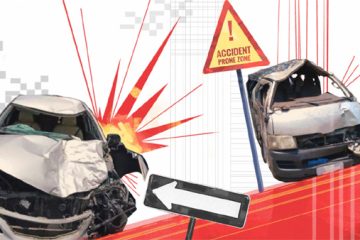Despite huge loss of life in building collapse incidents, none of the owners of the illegally constructed buildings have been brought to book by the administration.
In most cases, the buildings caved in, owing to the sheer profit-making attitude of the owners, which resulted in their flouting the building code. Over 500 people lost their lives while more than 8,500 were left injured, many of them disabled for life, in the last 18 years since 1995, according to a police estimate.
In some cases, the building owners and other accused were arrested for illegal and faulty construction. However, they had walked out on bail within a few days of their arrest, members of the victims’ families alleged.
People at Savar also complained that several such mishaps had taken place in the past, killing hundreds, but no mentionable punishment was meted out to the guilty.
The workers injured in the mishaps were usually too poor to bear the costs of treatment. Many of the bereaved families lacked the wherewithal to take the bodies back home. They would often hand over the bodies to Anzuman Mofidul Islam, for burial.
According to a case study, the owners of Spectrum Sweaters Industries Ltd, at Palashbari, Savar, were released on bail after the collapse of a nine-storey factory that had killed 75 workers, and left more than 100 injured.
Following the mishap, Nazrul Islam, officer-in-charge of Savar police station, had filed a case of murder by negligence on April 12, 2005. The case was immediately transferred to the Detective Branch.
According to the case statement, the factory owner had built the nine-storey structure using a faulty design that was never approved by Rajdhani Unnayan Kartripakkha (RAJUK). It also stated that the authorities had given permission for a four-storey building, but the owners had violated the order, by constructing a nine-story building.
On February 25, 2006, the Phoenix Fabrics building had collapsed in the city’s Tejgaon Industrial Area. At least 22 workers were killed, and 50 injured in the incident.
Tejgaon police had filed a criminal case against the chairman of the Phoenix Group that owned the building. He was charged with wilful violation of safety measures, among other things. A month after the tragedy, the owner of Phoenix building and five other accused were released on bail by a Dhaka court.
Metropolitan magistrate Suzayet Ullah had granted the bail on a bond of Tk. 50,000 with two guarantors, even though the High Court had directed the CMM to hear the matter of bail petition.
Talking to reporters, RAJUK’s chief engineer Emdadul Islam lambasted local authorities for not conducting any study on whether Rana Plaza, the building at Savar which collapsed on Wednesday, was fit to house garment factories.
“The local authorities have no engineers, architects, or inspectors. They only approve a plan by putting a signature and seal,” he said.
They were given to passing on all responsibilities to RAJUK, whenever an accident took place, he added.
“Though RAJUK is authorised to plan and carry out development infrastructure in the municipal areas, local administrative authorities in Narayanganj, Savar and Gazipur approve plans under the provision of RAJUK’s construction law,” explained the engineer.
He also blamed the local authorities as they conducted development work without any feasibility study.
Former Supreme Court Bar Association (SCBA) secretary and RAJUK legal adviser, advocate Mehedi Hassan, told The Independent, on Saturday, that a huge number of RAJUK-related cases were pending before the High Court, as well as the Supreme Court, for disposal.
The owners of the illegal structures could not be brought to justice, due to the backlog of pending cases, he added.
-With The Independent input




















